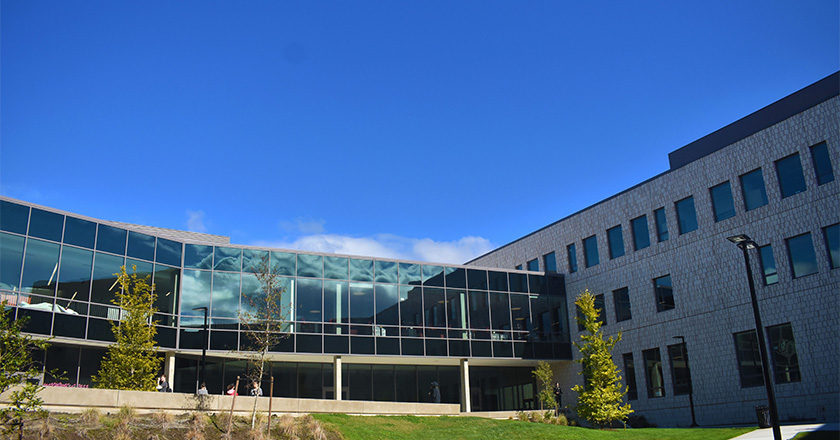Implementing and managing a business continuity program is no small feat. To build a BCMP, a practitioner needs to get buy-in, collaborate with departments and individuals, get the plans together, exercise those plans, and maintain them as time goes on.
Imagining tackling these tasks for large, even global, organizations. How difficult would that be?
The business continuity and emergency management managers of MIT, NYU, and VCU came together for a panel discussion on the challenges—and solutions—of being the engines behind these vital programs.
The speakers on the panel:
Director of Emergency Management , Virginia Commonwealth University (VCU)
Manager of Emergency Management, New York University (NYU)
Anne Marie MacLaughlin, CEM, CBCP, MEP
Director of Emergency Management and Continuity, New York University (NYU)
Emergency Management Specialist, Massachusetts Institute of Technology (MIT)
The webinar was originally recorded on September 24th, 2019. For the full webinar, contact Julie at julie@veoci.com.
Buy-In and Engagement from Leadership
The panelists all faced a common challenge: securing leadership’s buy-in for implementing robust business continuity solutions. Each of them were able to tackle this challenge with their own strategies; one of those strategies was making the stakes real.
Lori helped senior leadership at her organization understand what was in it for them. Moreover, they also identified the losses, impacts, and consequences of tackling an event without a plan in place. Presenting the outcomes of a planless response is what cemented their buy-in of Lori’s business continuity program.
Rolling out a BCMP for Your Institution
Starting is often the hardest part of a project.
How comprehensive a BCMP for a large institution like MIT, NYU, or VCU makes this adage seem true. But our webinar panelists had great tips for other business continuity professionals tasked with getting the continuity ball rolling for their organizations.
William Karnadi said one of the webinar’s most salient points when he responded to the “Where do I start” question.
William said you need you find your starting line first, which is something that’s easy to forget. Approaching the task of rolling out a large BCMP without a scope of what may already be in place will create unnecessary work. Doing this will most likely throw a wrench into your strategy and extend the implementation window.
William’s tip comes full-circle, though. He also said you need a sense of where you’re headed with your institution’s BCMP. Losing sight of your path or vision for the program will only add stress to the roll-out. Stick to the system you’ve thought out.
Lori’s advice tackles “Starting is the Hardest Part” head on.
There is a plethora of resources out there for business continuity and emergency management professionals, including incredibly large and diverse networks of other professionals. Some are bound to have faced this issue as well, so always be sure to reach out and ask for help. Two words sum her advice up well: “find inspiration.”
Steven Taddonio addressed one of the biggest obstacles any professional kicking off a program experiences: getting all the players to understand business continuity.
Steven said once they know, everything becomes much easier. But, as many things are, this is easier said than done. Sitting down with each department, or creating learning materials for them, will tell each stakeholder what this operation is and what it means to the institution. Educate the players on what their departments’ true essential functions are and guide them through whichever steps of building a plan they struggle with.
Maintaining a BCMP for Large Institutions
Anne Marie McLaughlin touched on what’s it’s like running what’s effectively a global BCMP.
NYU has 15 campuses across 11 countries, some of which are situated in some of the world’s largest and most famous cities, like New York City, Abu Dhabi, and Shanghai. Standardization of both response and maintenance is the oil in the large continuity machine here.
An ICS model here ensures the teams of each NYU campus follow the same response structure. Tools also help the teams on top of plan maintenance, pushing notifications and reminders about routine up-keep.
Ultimately, Anne Marie and William are trying to develop a data-driven decision making program. The end goal? To make sure NYU, as a global institution, is as resilient as possible.
For Steven Taddonio at MIT, being thorough is the key to guaranteeing the continued success of a large BCMP. Each department, and any sub departments, note the full details of essential functions.
Steven also advocated that the webinar’s listeners not be afraid to hold the hands of the other players in your institution’s BCMP. Some may need no guidance, while others may need help every step of the way. He advised that business continuity and emergency management professionals be totally open with all stakeholders, providing them with as much knowledge and assistance as they ask for.
At VCU, Lori added a unique perspective. She said, business continuity wise, VCU was the new kid on the block. She and the other stakeholders at VCU are still working through the last phases of their implementation plan. But from this position, she was able to pass along something she picked up about running a BCMP at a large and complex institution.
Establishing the relationships the program needs to succeed is critical. This includes department managers, leadership, senior leadership, and whoever else may be involved in the journey. Doing this may not show benefits immediately. But as the program matures, new requests and tasks pop-up, or a plan is put to the test, those threads will make the process easier.
Conclusion
The panelists of this webinar touched on these topics in more depth, and some other topics, over the course of the full webinar. If you’d like to see the recording, get in touch with our team.








